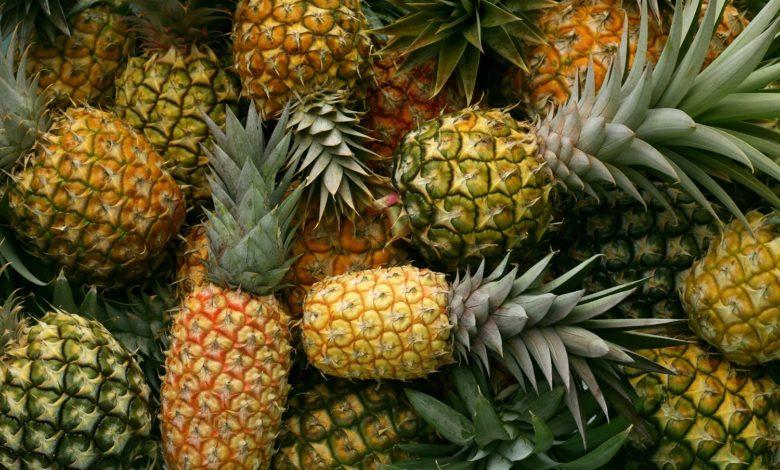
Pineapple Farming is one of the commercially significant crops of India. It is one of the popular crops because of its pleasant flavour and taste. Pineapple is an excellent vitamin A and Vitamin B source and is fairly rich in vitamin C and minerals like calcium, potassium, magnesium, and iron. It is also the best source of Bromelain, a digestive enzyme. In addition to being eaten fresh, the fruit may also be canned and processed in various forms.
Process of Pineapple Farming
In the below section, you can get the best guidelines for pineapple farming. For the suitable condition of pineapple farming, you should also keep the information regarding what is best in pineapple farming. Several types of equipment are used in pineapple farming, such as tractors, implements, and harvesters. You can consider the Massey 7250 tractor as it is best for farming operations. Apart from this, you can choose the Swaraj 735 tractor. Here we are describing the suitable conditions for pineapple farming.
1. Suitable Climate for Pineapple Farming
For pineapple growth, areas with heavy rainfall are best. The optimum rainfall is 1500 mm per year, although it can increase in areas with 500 mm to 5550 mm of rainfall. Pineapple is suitable for cultivation in moist tropics. The fruit grows well on the beach and in the interior unless extreme temperatures. The fruit grows well along the coast as well as inland, as long as the temperature remains between 15.5 to 32.50 °C. Low temperatures, strong sunlight and total shade are harmful. It can successfully grow up to 1525 metres above sea level.
2. Suitable Soil for Pineapple Farming
Farmers grow pineapples in almost any kind of soil, providing free draining. For pineapple cultivation, slightly acidic soil with a pH range of 5.5 to 6.0 is considered optimum. You choose the soil that is light in texture and well-draining. Pineapple is not preferable to heavy clay soil. It can grow in sandy, laterite or alluvial soil.
3. Best Season for Pineapple Farming
Pineapples thrive well in a humid tropical plant. You can grow best in the plains and also at an elevation that does not exceed 900 metres. It tolerates neither frost nor very high temperature. Pineapple can usually thrive from February to April, and this fruit will be ready from July to September. Sometimes, off-season flowers thrive, producing fruits from September to December.
4. The Spacing of Pineapple Plants
You should do high-density cultivation for commercial viability. Planting density of 63,400 saplings/ha. (22.5 x 60 x 75 cm) is ideal for mildly humid conditions and subtropical, while a plant density of 53,300 plants/ha for hot and humid conditions is 25 cm from plant to plant 60 cm from the row. Row and 90 cm trench to trench (25 cm x 60 cm x 90 cm) provides a high yield. In the northeastern states’ rainfed, highly fertile and mountainous regions, a somewhat lower density of 31,000 plants/ha is recommended.
5. Intercultural Operations in Pineapple Farming
Earthing up is a significant operation in pineapple farming that aims at providing good anchorage to the plants. This involves pushing the soil from the ridge into the trench, where trench planting is common. Since pineapple roots are very shallow, the plant eventually lodges under conditions of flat-bed planting, especially in areas with heavy rainfall.
Keeping plants while fruits are developing will result in unilateral growth, uneven growth and fruit ripening. This action becomes more important in ratoon crops, as the base of the plant changes, crop after crop. High-density planting will reduce the need for this operation, as the plants keep each other from living.
6. Irrigation Requirement for Pineapple Cultivation
Farmers mostly cultivate the pineapple under rainfed conditions. However, supplementary irrigation helps in producing good-sized fruits in areas with optimum rainfall. Irrigation also helps establish off-season planting to maintain its year-round production. Irrigation can be done once every 20-25 days in low rainfall and hot weather.
7. Manures, Fertiliser Management in Pineapple Crop
Pineapple is a shallow feeder with high potassium and nitrogen requirements. Since these nutrients have the possibility of causing heavy losses in the soil, practises related to the timing of application and the form of fertiliser determine their efficient use. Experts recommend giving N and K2O at 12 grams per plant based on research conducted at various places.
8. Harvesting and Yield of Pineapple
Pineapple flowers bloom 12 to 15 months after planting and are fruit ready 15-18 months after planting depending on prevailing temperature and variety during fruit development, time of planting, type and size. Under natural conditions, pineapple comes for harvesting during May-August. The fruits usually ripen about 5 months after flowering—irregular flowering results in long spreading cuttings. To obtain uniform flowering (more than 80%) in the main season, Aetherel (@100ppm) solution is applied to the plants one month before flowering.
Equipment Requirement
With information about pineapple cultivation, you should also know the equipment that will help to boost the yield. Tractor and other equipment are an essential segment in the pineapple cultivation process. However, the John Deere 5205 tractor is the most effective tractor for farming. You can also choose Swaraj 742, Eicher 551 and many more.
For more information regarding the Pineapple farming Blog in India, stay tuned with us.




